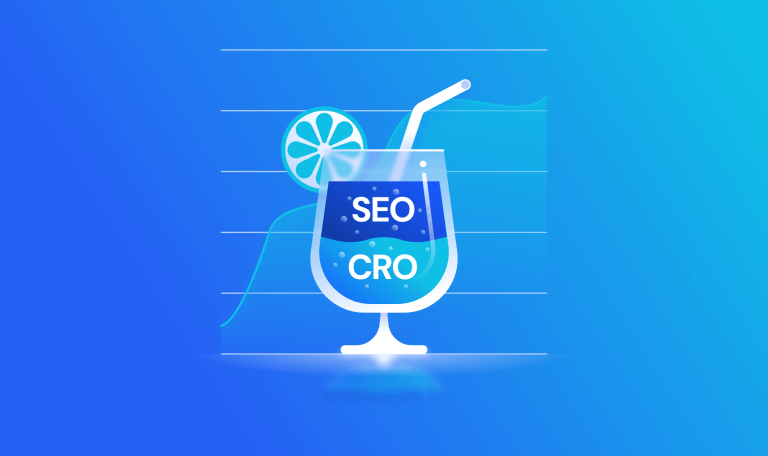SEO and UX: Friends or Foes?
Although it has just three letters, SEO has long been a four-letter word in the UX and design communities. Likewise, search engine optimization gurus have yielded little ground to their user experience contemporaries. Why the mutual animosity? Well, in the darker times, SEO and UX were in a constant battle between what looks good to search engine robots (Team SEO) versus what looks good to human website visitors (Team UX). Today their cold war of sorts has thawed – and it appears that each team was stone-cold wrong about the other, because the results are in, and data proves that both SEO and UX have immense value, and on top of that, they’re more valuable together. How do we know this? In a word, Google.
Leave it to the King of Search to untie this Gordian Knot, and they did so by ingeniously linking SEO and UX within their highly coveted search algorithms. You see, Google understands that consumers want more than specific keywords; they’re seeking usefulness and engagement. Keywords matter, of course (you have to start a web search somewhere), but search results that yield lasting value are what Google’s visitors are craving – and that’s what Google strives to provide.
To make this happen – align organic search results with visitor needs – Google now strongly considers user behavior signals like text size, button accessibility and mobile-friendliness (in addition to page load time and bounce rates). What was once viewed as mostly aesthetic values have now become essential search optimizers. Today, Google actually rewards a pleasant and informative online experience. By doing so, the search behemoth has conceded that SEO is as much about how users engage on a site as it is about keyword rankings or linking structures. So to make a long story short, instead of being adversaries, SEO and UX are actually two peas in the same search pod and when there’s a collaboration between them, it creates a better overall web experience for your visitors.
To prove this, we can look at Similarweb data and discover the change in search traffic before and after a particular website changed its UX. Doing some research, we discovered 5 websites that changed their UX at some point in 2015, and in the charts below, you can discover how the UX change affected desktop search traffic. In the case of ESPN and the Tennessee State Government website, the UX change actually led to a decrease in organic search traffic. Regarding ESPN, the site suffered a 29% decrease from March to April 2015, when the UX change took effect. Furthermore, though there is some seasonality to sports, April 2015 is when both the NHL and NBA playoffs began and the MLB regular season started to play. In the case of the Tennessee Government site, there was a major decrease in search traffic immediately following the UX change and even if we compare September 2014 to September 2015, search traffic to the site was down 58%.
On the other hand, Bloomberg Business redesigned its website and UX in February 2015 and saw major long-term increases in search traffic. Their new UX is clearly SEO friendly and has only helped increase search traffic. This trend also holds true with Product Hunt, a curation site of new tech products, and Trippeo, a service that automates the travel and expense process. Product Hunt redesigned their site in November 2015 and though it’s still early, the results are encouraging. From November to December 2015 search traffic rose 21% and has been trending steadily upwards since then. Similarly, Trippeo radically changed their UX in January 2015 and the SEO results were both positive and immediate – from December 2014 to January 2015, Trippeo’s search traffic rose 700%. Even looking on a longer-term basis, search traffic was up 560% when comparing September 2014 to September 2015.
That being said, here are 3 big reasons for bringing your SEO and UX teams together – and 3 easy ways you can do so.
Why You Should Bring SEO & UX Together
- You’ll have a website that can be easily found (SEO) and easily navigated (UX). After all, what good is a website that looks great but doesn’t appear in search results? Or one that is discoverable yet useless to visitors?
- You’ll gain key consumer search data and insights (SEO) that will influence the way your website is organized and designed from the start (UX) – not awkwardly shoehorned in at a later date.
- You’ll establish a collaborative relationship between the two that will outlast your initial website build (or rebuild). This will not only lead to a more useful and discoverable website from the start, but it will also pay future dividends as your site evolves over time.
How To Bring SEO & UX Together
- Start by seating your SEO and UX teams closely together (assuming you have both disciplines under one roof). By sharing the same working environment, a competitive relationship can often become a collaborative one, especially if both teams are involved in web projects together from the start. This brings us to number 2…
- Engage your SEO and UX teams before a web project kicks off, not after. Why? By working together from the planning stages, both groups can impart powerful insights that may very well take your project to an unexpected (and altogether better) place. They’ll also take increased ownership of the project by being consulted and included early in the process.
- And last but not least, create a shared vision and goal for your SEO and UX teams. This may sound a little Kumbaya-ish, but it makes logical (and financial) sense. By establishing success metrics, both teams will know what to aim for. And by being on the same page, their aim will be true.
Guest Author: Hal Bowles
A connoisseur of the written word, Hal brings nearly 15 years of copywriting experience to Rhythm Agency. He understands that in a crowded marketplace, the simplest message wins, and his copywriting reflects this principle.
The #1 keyword research tool
Give it a try or talk to our marketing team — don’t worry, it’s free!









